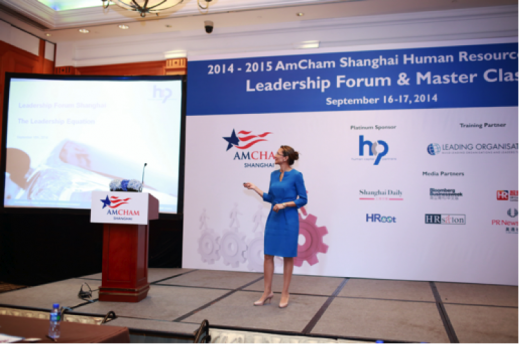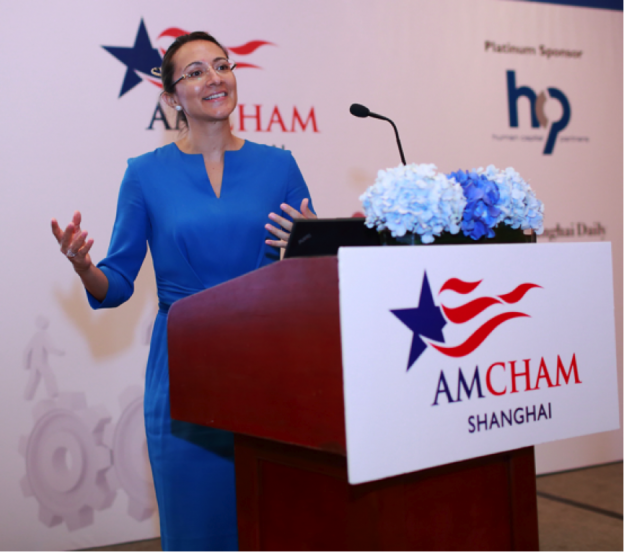A GREAT Leader must have components of GREAT.
There is a big difference between a LEADER and a GREAT LEADER. Our years in the automotive sector in China and Asia have allowed us to compile valuable insight into what is a GREAT LEADER; the result of which is combination of behaviours which shape leadership style and impacts on teams, customers and overall business results. To better understand and define the behaviours of a GREAT Leader, we have constructed a simple, yet effective equation.

Vanessa Moriel, MD & Founder of HCP, Presenting the Leadership Equation – AmCham Leadership Forum 2014
A+B+C+D+E+F=G (GREAT LEADER)
This equation is based around being able to spot and persuade great candidates for senior roles. Our GREAT leadership assessment is now always used as part of our search methodology. Every one of the GREAT leaders we have placed in China/Asia senior roles in the past decade has these defined behaviours, which has enabled them to succeed in the Asia and China markets.
A = Agility
Agility not only refers to the physical energy that a candidate can bring to a role or an organisation. It also refers to being agile when uncertain, complex, ambiguous markets deliver unexpected circumstances or the need for rapid and decisive change. Agile leaders must be able to actively identify challenges and tackle them head on. They must also be able to adapt to differing business environments and connect with different team members.
B = Balance
Great leaders are often faced with conflicting approaches to a task or problem. Knowing which side of the fence to sit on in each situation can be difficult and it can often need to change quickly as external factors present themselves. Whilst being rationally minded will be beneficial in many situations, there may be a time when an intuitive response is required to further progress the company or a particular team. Similar juxtapositions can be identified in other areas including whether to delegate or be ‘hands on’; whether to be flexible or firm; whether to focus on results or reliability. Knowing when to make each call is the key to understanding and achieving ‘Balance’ as a great leader.
C = Confidence
It’s no secret that great leaders are usually confident people. They believe in themselves and their convictions. People tend to trust leaders who are confident as it gives assurance that the person is also competent. Confidence is usually something that is developed as a result of making good judgement calls and to ensure that good judgement calls are made, a GREAT LEADER will always:
- Listen
- Speak
- Act
Without confidence, a leader is likely to find they lack the most important component of leadership – followers.
D = Drive
Liking (even loving!) what they do will be a critical success factor for any prospective candidate. This is true of most great leaders, as they must believe in what they are doing. Whether it is the company, the product, the team or the task in hand, being passionate about their position will encourage learning and development, which will further contribute to their success.
E = Engaging
It is essential that a GREAT LEADER engage with their team to find meaning in their work. They will spend time finding out each individual’s aspirations, talents, problems and interests and build commitment to achieve objectives through engaging with people and enabling them to take ownership of their work. Encouraging and reinforcing shared accountability for success often achieve this.
F = Futuristic
Using past successes, failures, experiences and knowledge to be forward thinking will enable a GREAT LEADER to identify potential problems before they arise.
They will also use the experiences of their team to ensure that they are as prepared as possible for what the future holds.
G = Great Leader
Finally, to be a GREAT LEADER a candidate needs to consider all of the above topics in terms of:
- The team
- The organisation
- The customers
- The suppliers
- The bottom line


